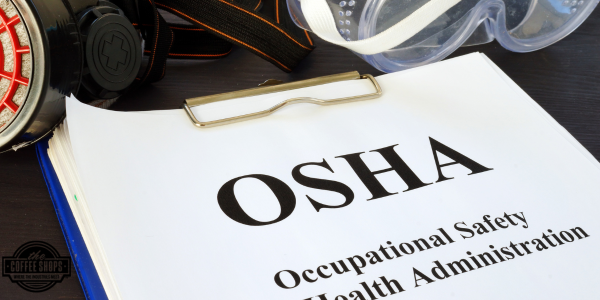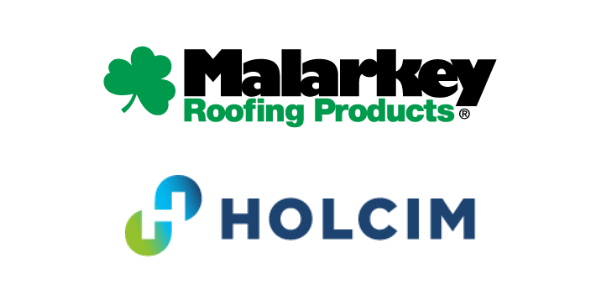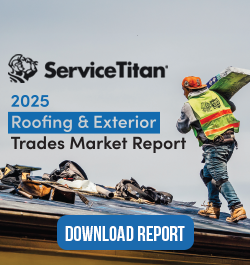NRCA Offers Comments to OSHA’s Proposed Blood Lead Level Rule
January 24, 2023 at 1:00 p.m.By Trent Cotney.
In a letter sent to OSHA, the NRCA affirmed the dangers of lead and made lead standard recommendations.
In recent months, the Occupational Safety and Health Administration (OSHA) issued an Advance Notice of Proposed Rule Making (ANPRM) – Blood Lead Level for Medical Removal. This proposed rule was published in the Federal Registry on June 28, 2022, and the public comment period was opened.
The National Roofing Contractors Association (NRCA) took the opportunity to review the proposed rule and submitted a response to OSHA on October 28, 2022. In that letter, the NRCA affirmed the dangers of lead and made several recommendations.
Reasons for the proposal
The NRCA acknowledged that OSHA proposed the rule to revise the agency’s standards for work-related exposure to lead. The agency is exploring the option of reducing blood lead levels (BLLs) that require medical surveillance and medical removal protection provisions in both the general and construction industries.
The current medical removal level is equal to or greater than 60 micrograms per deciliter (μg/dL) in the general industry and equal to or greater than 50 μg/dL in the construction industry. For employees to return to their former job status, the level is less than 40 μg/dL.
However, since OSHA issued its lead standards, medical research has found that adults can experience negative health effects at BLLs that are lower than those of medical removal levels. With that in mind, OSHA is looking for input into reducing occupational exposure to lead, how to set BLL trigger standards, and how to revise medical surveillance procedures.
Recommendations from NRCA
In its comments, the NRCA focused primarily on OSHA’s lead standard in the construction industry, specifically on how the proposed rule would impact the roofing industry. The letter noted that the roofing industry does not have substantial exposure to lead, but some roofing materials do contain lead. Roofers can be exposed when cutting and shaping roof-top vent stacks, hand-soldering joints, and slicing lead-coated materials. That work is not consistent but somewhat intermittent.
Based on those details, NRCA suggested the following recommendations (taken verbatim from the letter):
“The current action level or measure of employee exposure without the use of respirators in the lead in construction standard (29 CFR 1926.62) for airborne concentration of lead is 30 micrograms per cubic meter of air (30 μg/m3) calculated as an 8-hour time-weighted average (TWA). Should OSHA proceed with lowering the current action level, NRCA believes it would be counterproductive to adopt the action level currently proposed by Cal/OSHA (2 ug/m3). This very low action level would impose an unnecessary burden on all contractors, but especially small roofing businesses due to the medical surveillance and overall paperwork duties necessary to comply with the standard.
Similarly, any adjustments to the BLL for medical removal, currently > 30 ug/dL, must not be unduly burdensome on employers, particularly small contractors.
Section 1926.62 (d)(3) of OSHA’s lead in construction standard allows the employer to use objective data to demonstrate ‘that a particular product or material containing lead or a specific process, operation or activity involving lead cannot result in employee exposure to lead at or above the action level during processing, use, or handling, the employer may rely upon such data instead of implementing initial monitoring.’ NRCA recommends that OSHA consider adding a summary table of tasks and respiratory protection levels to the standard, like Table 1 in the Respirable Crystalline Silica standard.
OSHA should continue its emphasis on the ancillary requirements already contained in the standard including personal protective equipment (PPE), training, housekeeping, and hygiene. The American College of Occupational and Environmental Medicine (ACOEM) in their 2016 position statement ‘Workplace Lead Exposure,’ stated that in addition to appropriate engineering controls and personal protective equipment to protect workers from airborne or surface contamination, employers should provide basic hygiene measures such as handwashing stations and lead-free eating and break areas to reduce lead dust exposure. Workers should also receive annual training regarding lead health effects and exposure control including instruction that airborne lead inhalation, surface contamination, and ingestion can result in elevated BLLs.
In 1926.62(h)(1) of OSHA lead in construction standard, it states that all surfaces shall be maintained as free as practicable of accumulations of lead. Surface contamination levels should be clarified, and OSHA should codify the 2003 Letter of Interpretation that states that the Agency would not expect surfaces to be any cleaner than the 200-ug/ft2 HUD level.”
In summary
NCRA concluded its letter by stating its support of “well-formulated workplace regulations that improve and enhance worker health and safety as the current standard does.” It urged OSHA to be practical in its rulemaking and urged the agency not to create more testing, monitoring and paperwork for roofing industry employers, specifically small businesses. NRCA offered its assistance to OSHA in determining the best ways to protect roofers and limit lead exposure.
It will be interesting to see how OSHA reacts to these and other comments on the proposed rule. The commenting period is now closed (it was extended from August 29 to October 28), so now we will wait to see if the proposed rule is revised and eventually finalized.
If you have any concerns about how the proposed rule could affect your workers or your business, do not hesitate to consult legal counsel. An experienced construction attorney can help you understand current OSHA regulations and ensure you are in compliance.
The information contained in this article is for general educational information only. This information does not constitute legal advice, is not intended to constitute legal advice, nor should it be relied upon as legal advice for your specific factual pattern or situation.
About Trent Cotney
Trent Cotney is a partner and Construction Practice Group Leader at the law firm of Adams and Reese LLP and NRCA General Counsel. For more information, reach out to Trent at trent.cotney@arlaw.com.
The information contained in this article is for general educational information only. This information does not constitute legal advice, is not intended to constitute legal advice, nor should it be relied upon as legal advice for your specific factual pattern or situation.
























Comments
Leave a Reply
Have an account? Login to leave a comment!
Sign In